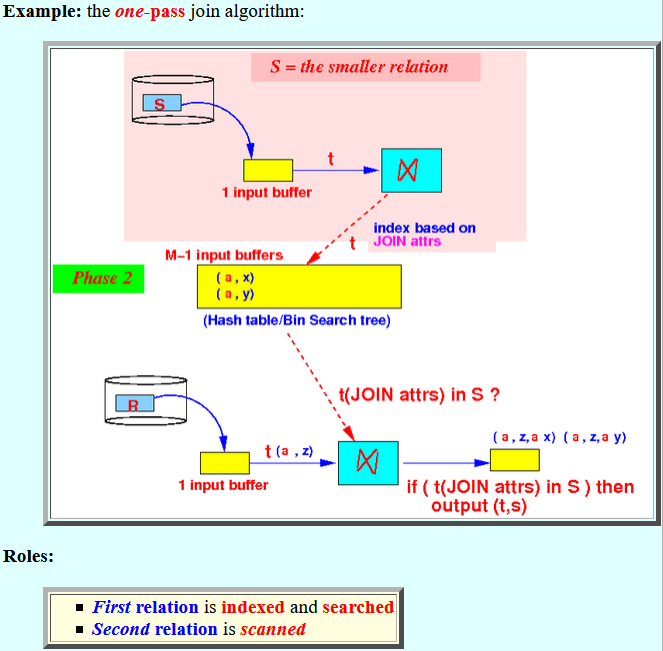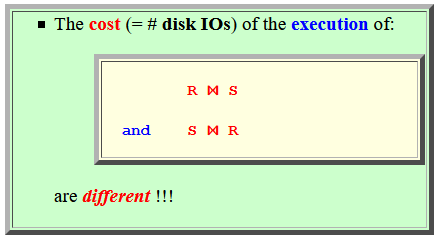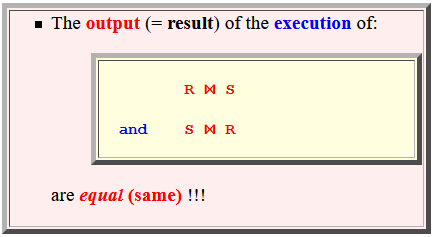Slideshow:
- Theory:
- The join operator is
(in theory) commutative:
(i.e.: symmetric in
behavior)
R ⋈ S = S ⋈ RSee: click here
- The join operator is
(in theory) commutative:
(i.e.: symmetric in
behavior)
- Practice:
- The algorithms that
implement the
join operation are:
- Asymmteric !!!
I.e.:
- The role of the first input relation is different from the role of the second input relation
- Example:
the one-pass join algorithm:

Roles:
- First relation is indexed and searched
- Second relation is scanned
- The algorithms that
implement the
join operation are:
- Cost of
join algorithms:
- The cost
(= # disk IOs) of the
execution of:
R ⋈ S and S ⋈ Rare different !!!
However:
- The output (= result)
of the
execution of:
R ⋈ S and S ⋈ Rare equal (same) !!!
- The cost
(= # disk IOs) of the
execution of:
- One-pass
join algorithm:
- R ⋈ S:
- The first relation (R)
in the join expresion
is
used to build an
index.
- The second relation (S) in the join expresion is scanned
Graphically:
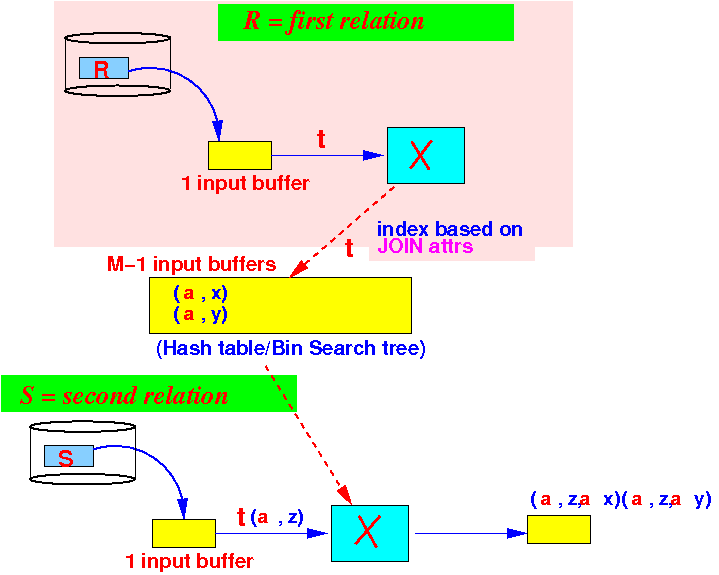
- The first relation (R)
in the join expresion
is
used to build an
index.
- Nomenclature:
- R is called the
build relation
(We build an index on this relation)
- S is called the
scanned relation
(We scan this relation)
- R is called the
build relation
- Therefore, in the
one-pass
join algorithm:
- The smaller relation is the build relation
- The larger relation is the scan relation
- R ⋈ S:
- Nested loop
join algorithm:
- R ⋈ S:
- The first relation (R)
in the join expresion
is
used in the outer loop
- The second relation (S) in the join expresion is used in the inner loop
In other words:
while ( R ≠ empty ) // Outer loop { Read M - 1 blocks of R and organize them into a search structure (e.g., hash table)' Rewind R; while ( S ≠ empty ) // Inner loop { Read 1 block (b) of S; for ( each tuple t ∈ b ) do { Find the tuples r1, r2, ... of R (in the search structure) that join with t Output (r1,t), (r2,t), ... } } }
Graphically:
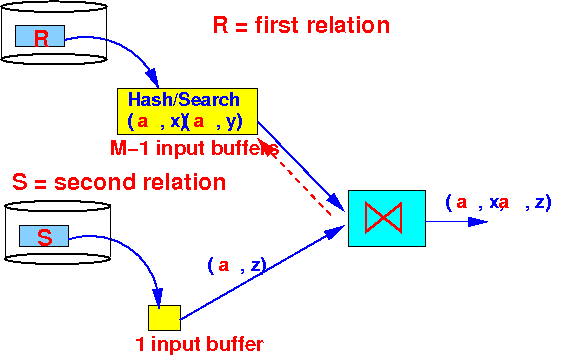
- The first relation (R)
in the join expresion
is
used in the outer loop
- Terminology used in the
nested-loop
join algorithm:
- The outer relation is the first relation
- The inner relation is the second relation
- R ⋈ S:
- Index
join algorithm:
- R ⋈ S:
- The second relation (S) must have an index on the join attributes
- R ⋈ S:
- Suppose you want to compute
the join
the relations
R and S
and
there are no constraints
on your choices.
Then you have 2 ways to compute the join:
- R ⋈ S and
- S ⋈ R
- Without any
other factors to
help you choose, the
(default) choosing strategy
is as follows:
If ( T(R) ≤ T(S) ) then: choose R ⋈ S else: choose S ⋈ RI.e.: choose the smaller relation as the first relation
- Example:
- Query:
SELECT movieTitle FROM StarsIn, MovieStar WHERE starName = name AND birthdateLIKE '%1960'
- Query plan:
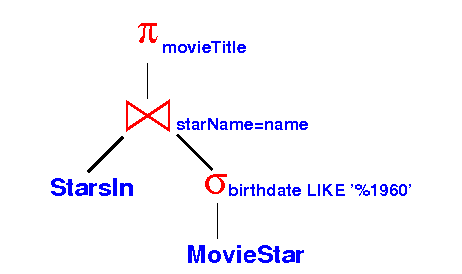
The join-tree is actually like this:
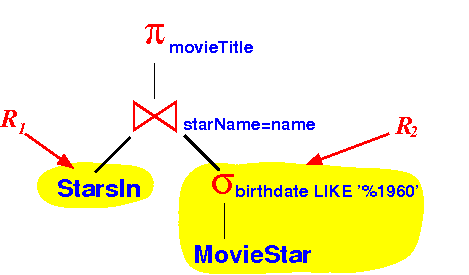
- If the
second input relation
(
σbirthdate LIKE '%1960'(MovieStar))
is smaller than the
first relation
(StartsIn), we want to
switch the
order to:

- Query:


